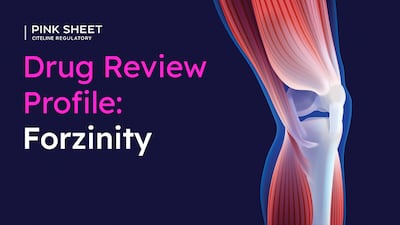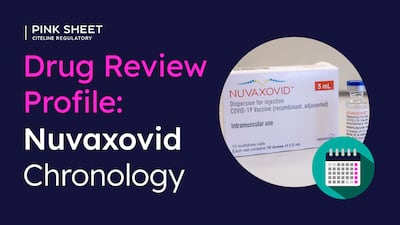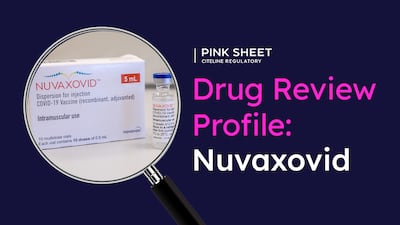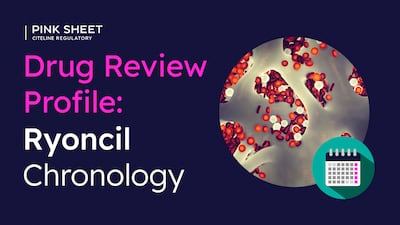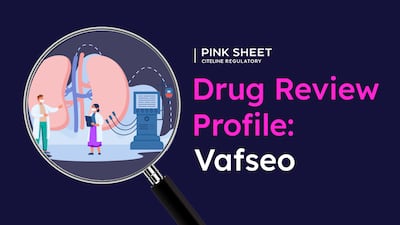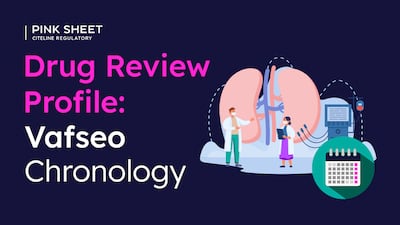Drug Review Profiles
Saol Therapeutics cannot conduct a new clinical trial of SL1009 in ultra-rare mitochondrial disorder, but aims to answer the FDA's complete response letter with new looks at available data.
FDA reviewers cited several limitations of the videos, including a lengthy recall period, use of the term “today” in questions, and a lack of standardization in interview conduct.
The Pink Sheet’s Drug Review Profile looks at the clinical development and US FDA review timeline for Stealth's elamipretide for Barth syndrome.
Stealth BioTherapeutics' diligent response to the FDA’s accelerated approval suggestion, its justification for proposed confirmatory trial milestones, and the rarity of Barth syndrome gave the agency confidence to grant approval before the postmarketing study began.
Recently departed CDER Director George Tidmarsh publicly touted his own role in reviewing Stealth's elamipretide data and guiding the division on the last-minute accelerated approval, though his name is absent from the review documents.
Clinical and statistical reviewers favored a second complete response letter, but Hylton Joffe, director of the Office of Cardiology, Hematology, Endocrinology and Nephrology, said accelerated approval based on knee extensor muscle strength was reasonable in the very rare disease.
Regeneron’s odronextamab faced regulatory hurdles in the US due to trial and manufacturing issues, while it secured a smooth approval in Europe, offering key lessons to sponsors on how to navigate global submissions.
Minoryx explained to Pink Sheet why it believes its resubmission for leriglitazone stands a stronger chance of approval, and highlighted the value of early dialogue with the regulators when it comes to rare diseases, where the understanding of the natural history and outcomes is often limited.
Quick responses to late-breaking changes to US FDA COVID-19 vaccine policy kept Novavax's Nuvaxovid and Moderna's mNexspike close to expected approval timelines despite revised indications and new post-marketing trial commitments.
Last Minute Course Shifts, Focus On Unknowns: What Sponsors Should Learn From Prasad’s Interventions
The once and current CBER director’s justification for his COVID-19 decision stands as a warning of the uncertainty sponsors, particularly those in the vaccine space, may now face at FDA.
Pink Sheet Drug Review Profile feature listing FDA staff who conducted the reviews of Novavax and Moderna's post-pandemic COVID-19 vaccines
The company’s failure to show its potency assays measured attributes directly related to the mesenchymal stromal cell product’s therapeutic effect highlights the importance of a robust CMC program for complex cell therapies.
Agency staff repeatedly said the BLA based on a single-arm study in 55 patients lacked substantial evidence of effectiveness in steroid-refractory acute graft-versus-host disease and a randomized trial was needed, but changed course “based on additional consideration” after a second CRL.
The Pink Sheet’s Drug Review Profile looks at the timeline for the clinical development and US FDA review of Mesoblast’s remestemcel for graft-versus-host disease.
The Pink Sheet drug review profile investigates the long and rigorous process behind the FDA’s recent relaxation of the cardiovascular safety warning for testosterone products.
The Pink Sheet Drug Review Profile breaks down the FDA's long reckoning with testosterone cardiovascular safety concerns
Vadadustat's review overlapped with two other oral HIF-PH class drugs. Safety issues with FibroGen/AstraZeneca’s roxadustat drew attention during vadadustat's first-cycle review, while GSK’s Jesduvroq labeling and postmarketing requirements informed the second-cycle approval.
The Pink Sheet Drug Review Profile explores the US FDA’s approval of vadadustat to treat anemia in chronic kidney disease patients on dialysis. A complete response letter cited the risk of drug-induced liver injury, but postmarketing data from Japan reassured reviewers.
The Pink Sheet’s Drug Review Profile looks at the timeline behind the development and US FDA approval of Akebia’s Vafseo, a treatment for anemia in chronic kidney disease patients on dialysis.
Pink Sheet’s Drug Review Profile explores Amgen’s Wezlana, an interchangeable biosimilar to Janssen’s Stelara. FDA determined late in the review that switching studies generally would not be needed for interchangeable ustekinumab products, prompting Amgen to seek the designation.






